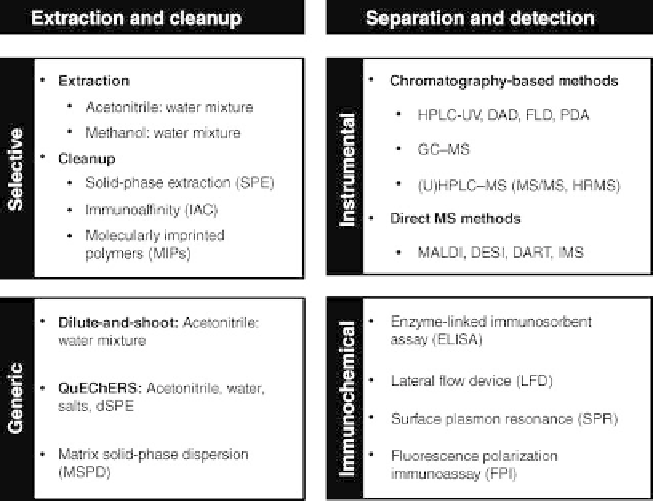Agriculture Reference
In-Depth Information
Figure 8.1.
The scheme and overview of analytical methods used in mycotoxins analysis.
complexity of the sample, and thus the extent of sample preparation needed prior to
instrumental analysis can vary. Other important factors affecting the throughput of
analysis are the time for chromatographic analyses followed by data processing and
data evaluation.
In the following sections, topics relevant to high-throughput analysis of mycotox-
ins in food and feed, including sampling and sample preparation, are discussed. This
chapter focuses primarily on work
MS, rapid immunological
methods, and some nonchromatographic MS-based techniques, as these approaches
represent the primary tools in this
ows employing LC
-
field.
8.2 SAMPLE PREPARATION
Sample preparation is a crucial step in the analysis of mycotoxins and creates a
bottleneck in most analytical procedures [16]. Numerous sample preparation proto-
cols that largely differ in overall time requirements have been described already,
depending on the nature of the sample matrix and the type of detection and
quanti
cation. These processes typically involve (i) homogenization of the sample,
(ii) extraction of target mycotoxins from the sample matrix, and (iii) cleanup of the
crude sample extract with simultaneous preconcentration or dilution of analytes. In
addition to sample preparation, sample collection (sampling) is another critical factor
strongly in
uencing the results of a particular assay [4,5,17,18].

